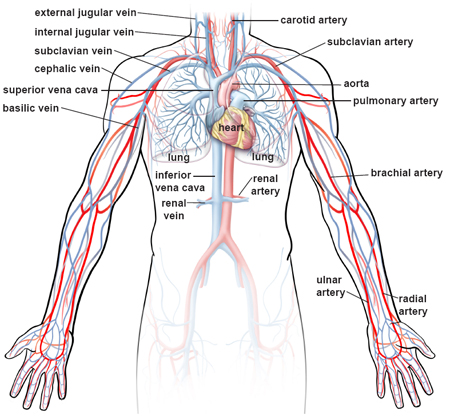We all have arteries. They are the tubes that carry blood to our body’s various parts. But what are they, exactly? And how do they interact with other parts of our body? In this comprehensive blog post, we’ll explore the arteries and how they help us live a healthy life. We’ll also look at some of the negative effects that can arise from having an unhealthy artery, such as heart disease and stroke. Finally, we’ll learn about some of the best ways to optimize your arterial health so you can live a longer, healthier life.
Your arteries are the tubes that carry oxygen and nutrients to your muscles and other organs. They’re also a major source of blood pressure and stress. But how do they work? And what can you do to optimize them?
The arterial system is the body’s largest and most important blood vessels. It carries nutrients, oxygen, and other vital fluids to and from the rest of the body. And because it’s so important, they can play a big role in your health. But how do they work? And what can you do to improve them?
The Arteries of the Body
Many people think that the arteries are just small tubes that carry blood to your heart. But they’re not. The arteries are actually one of the most important organs in our body. They help you feel good, look good, and live a long life. In this blog post, we’ll explore what the arteries are, how they work, and how to optimize them so that you can live a healthier life.
What the Arteries Are, and How They Work
The arteries are your body’s major blood vessels. They are what transport oxygen-rich blood from the heart to all of the other organs in your body. All of the blood that comes out of your heart goes through the arteries, which is why they play such a crucial role in your cardiovascular health.
But it’s not just their function that makes them so important. The arteries also do a lot more than move blood around and help you live long. The arteries have many other functions that make a big impact on our bodies’ overall health and well-being, including:
• Providing oxygen for every cell in your body
• Acting as an immune system against infections
• Helping regulate organ function
• Controlling temperature
• Helping with digestion by breaking down food into usable nutrients
You can read more about how these functions work by clicking here!
How the Arteries Work

The arteries are the largest blood vessels in your body. They carry blood from your heart to the rest of the body. The walls of the artery are made up of three layers: The intima, media, and adventitia.
The intima is the inner layer that is closest to the heart. It’s also called the tunica intima because it resembles a thin walled bag with a small opening on one side near your heart. This opening is called an ostium and controls blood flow by regulating how much blood flows through this vessel each second.
The media or middle layer is where most of the action happens. It’s thicker than the intima and contains many layers of dense connective tissue known as fibrous septa, which help keep fluid from leaking out when there is a lot of pressure in that area. These septa are also what make up about 98% of all your arteries’ total mass; they’re large, tough cells with plenty of nutritional value for your body.
Lastly, there’s the adventitia or outermost layer, which makes up about 1% of all the thicknesses in an artery wall. The adventitia is thin and has no elastic properties so it doesn’t have
How to Optimize the Arters.
You may not realize the importance of your arteries. They’re an organ that many people only think about when they have a heart attack. If you want to live a long life, you need to take care of your arteries.
But how can you do that? Start by getting regular checkups and following a healthy diet and exercise routine. You can also work on improving your cholesterol levels by incorporating foods like avocados and nuts into your diet, which are rich in monounsaturated fats that lower LDL cholesterol levels and raise HDL cholesterol levels.
In addition to these steps, you should make sure to optimize the blood flow within your body. You can do this with a variety of methods including aerobic activity, strength training, and meditation.
